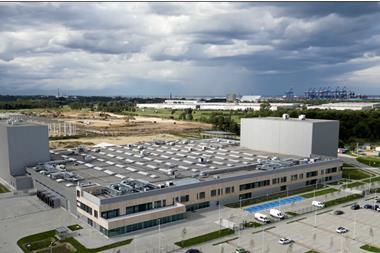As pension funds look around for innovative ways of boosting their income from traditional asset classes, private equity is moving into the mainstream as a way of achieving this.
Länsförsäkringar Liv Försäkrings (LF) of Sweden has become a pioneer in developing this asset class as an integral part of a pension fund portfolio.
The fund embarked on a new five-year private equity strategy early in 1999. It had already made opportunistic investments in the asset class over the previous decade, but it now decided to fix a target allocation to private equity, with the target set at 5% of assets under management.
This target was significantly more ambitious than the fund’s existing level of investment in private equity. It requires not only a much more structured approach to investing in the asset class, but also a well-defined and appropriate investment strategy.
The new strategy was dependent on several cornerstones.
First, there was to be no rush in making investments. LF accepted that it could take more than five years to build up the private equity portfolio, allowing it to use a high degree of discrimination in selecting managers.
It was felt that there was no need for excessive diversification, so the aim would be to invest substantial amounts of money with a limited number of core managers. LF would invest primarily with established ‘blue chip’ private equity managers who met highly demanding investment criteria. In addition, the fund would seek smaller investments in up-and-coming managers that appeared highly likely to meet the investment criteria for core relationships in their next fund.
Unlike many other investors that prefer to set allocations between different geographical regions, LF would employ a bottom-up approach. This meant the fund would concentrate on finding the best managers globally, rather than the best for a specific region.
Another key element of the strategy was to limit exposure to venture capital. In 1999, venture was considered to be possibly the most attractive sector of the private equity universe, but its perceived higher volatility and risk of producing negative returns over long periods made it less suitable for an institution such as LF, where private equity as a whole was an asset class which was still not well-known or understood.
In 2003, because of balance sheet constraints, the target allocation to private equity was revised downwards. This revised target was reached earlier this year.
LF says that its private equity strategy has been highly successful. In the 12 months to 1 September 2005 alone, the private equity portfolio has achieved a return of 17%, which has had a significant impact on the return of the portfolio as a whole.
Since the new strategy was launched, LF has committed about €1bn to 55 private equity funds, run by 33 managers.
The expected capacity from LF’s 14 core buy-out relationships is enough to cover 70% of the portfolio’s investment needs over the next four years. The fund says this is a very attractive position to be in, as it is a sizeable challenge for larger institutional investors such as itself to get capacity with high quality managers such as these.
LF also has a stable of up-and-coming managers. It has invested smaller amounts in seven buy-out managers, and expects some of these investments to develop favourably enough for the managers to become core players in time for their next fundraising. LF is confident it will be able to achieve significant capacity allocation increases with these managers.
In addition to these later-stage investments, LF now has capacity with seven of the world’s leading venture capital managers, corresponding to roughly 7% of the total private equity portfolio. This allocation is small, but it is in line with LF’s overall strategy. The fund believes that this venture segment will provide an attractive exposure to a market sector which can be expected to yield very high returns in the long term.
LF has set a long-term return hurdle for its private equity programme of 4% above the MSCI World Index, measured according to the Public Market Equivalent methodology. Even though the programme is still not fully mature, the investments made since 1999 have, on aggregate, matched this return hurdle. And in terms of IRR, the average annual net return since 1999 is 5.6%.
The icing on the cake is that the private equity programme as a whole is already out of the J-curve. This calendar year will be the first to produce a positive net inflow of capital since the programme was started.
Over the next few years, LF says it expects its private equity portfolio to continue delivering a net cash contribution to the balance sheet as a whole.
Highlights and achievements
In taking the plunge with its 5% target allocation to private equity, Länsförsäkringar Liv Försäkrings has followed a structured approach that has paid dividends.
The pension fund has used a bottom-up approach to find the best managers, investing large amounts with a limited number of established blue chip private equity firms. Additional smaller investments have been made with up-and-coming managers who are expected to perform well enough to become core managers in future. The fund’s exposure to venture capital has been limited, but the investments are with leading managers.
In doing all of this, the maxim has been to take the necessary time to find the best managers.
The upshot is that LF’s private equity portfolio has already started to give back positive returns – 17% over the past 12 months, a return which has made a significant contribution to the pension fund portfolio as a whole. And the average returns since the private equity programme started are already meeting LF’s long-term return hurdles.
These results are underpinned by the existence of significant investment capacity within LF’s core buy-out relationships with top managers, while the fund also expects some of its less-established managers to provide core relationships in the future.













No comments yet